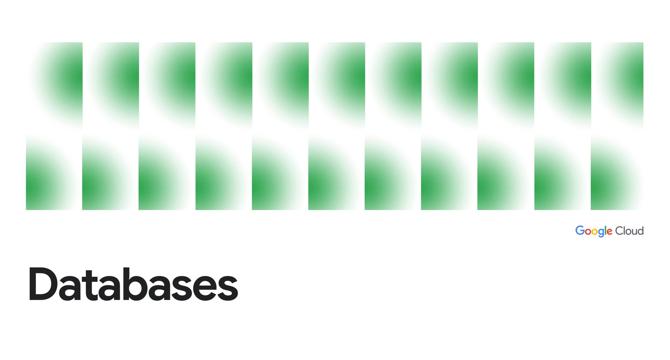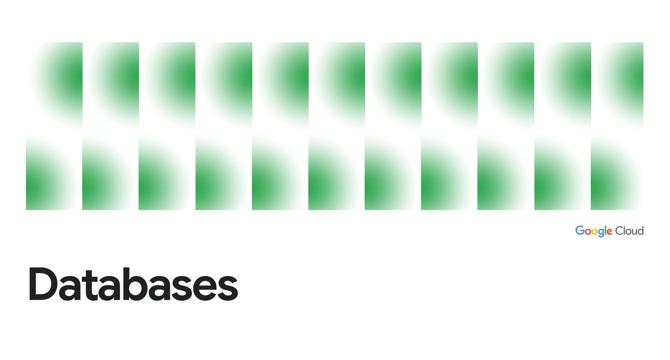Databases
Dev
277

Image Credit: Dev
How to Select Columns Based on Conditions in SQL?
- In SQL, selecting columns based on conditions can be challenging.
- You can use a combination of CASE statement and SELECT clause for conditional column selection.
- The query retrieves columns A, B, and C if position is 1, otherwise D and E.
- Testing examples help validate the query and FAQ addresses common queries related to this method.
Read Full Article
16 Likes
VentureBeat
372

Image Credit: VentureBeat
The $1 Billion database bet: What Databricks’ Neon acquisition means for your AI strategy
- The $1 billion acquisition of serverless PostgreSQL startup Neon by Databricks highlights the importance of databases for enterprise AI.
- Data is crucial for training AI, and without proper data, AI efforts often fail.
- Databricks' acquisition of Neon signifies the value of databases in the era of agentic AI and modern development practices.
- Neon's technology, although based on the established PostgreSQL platform, has a serverless approach for building AI applications.
- PostgreSQL, as an open-source relational database platform, is widely used and trusted for its stable features.
- Serverless databases like PostgreSQL offer ease of operations and allow for on-demand deployment, attracting developers for quick application development.
- Various cloud providers offer PostgreSQL services, including serverless options, making it a popular choice for AI applications.
- Databricks' acquisition of Neon complements their existing offerings and aims to build a developer and AI-agent-friendly database platform.
- Serverless PostgreSQL is seen as a foundational technology for AI and analytics, providing scalability and cost-effectiveness for AI projects.
- Neon's serverless PostgreSQL approach separates storage and compute, enabling automated scaling for AI projects.
- This acquisition suggests that a focus on serverless database capabilities is crucial for successful AI implementations, emphasizing the need for dynamic resource allocation.
Read Full Article
22 Likes
Dev
99

Image Credit: Dev
How to import Excel to MySQL
- To import Excel data into MySQL quickly and easily, follow these steps:
- Prepare an Excel table with the data to be imported.
- Open the DiLu Converter tool and create a new MySQL database connection.
- Click on 'New Import,' select the Excel file to be imported, and begin the import process.
- Optimize the import process by setting field types automatically for consistency and convenience in SQL queries.
Read Full Article
6 Likes
Dev
381

Image Credit: Dev
Step-by-Step Guide to Set Up a Cron Job to Run a Report
- Set up a free-tier AWS EC2 instance as a baseline development environment before automating report generation with cron jobs.
- Steps to set up a free-tier EC2 instance include creating an AWS account, launching an EC2 instance, configuring storage and security groups, and accessing the instance.
- Automate report execution by preparing your report script, setting up a cron job to schedule the script's execution, defining the cron schedule and command, saving and verifying the cron job, and monitoring and troubleshooting any issues.
- Ensure your report script runs correctly, set execution permissions, schedule with crontab, redirect output to logs for monitoring, verify the cron job, and troubleshoot if needed.
Read Full Article
22 Likes
Discover more
- Programming News
- Software News
- Web Design
- Devops News
- Open Source News
- Cloud News
- Product Management News
- Operating Systems News
- Agile Methodology News
- Computer Engineering
- Startup News
- Cryptocurrency News
- Technology News
- Blockchain News
- Data Science News
- AR News
- Apple News
- Cyber Security News
- Leadership News
- Gaming News
- Automobiles News
Dev
177

Image Credit: Dev
Creating Reports to Find Missing Data During the Normalization Process in SQL
- Creating reports in SQL to find missing data during the normalization process is crucial for maintaining data integrity.
- Common SQL reporting patterns like NOT EXISTS, IS NULL, CASE, and boolean-style flags can help detect and quantify data anomalies.
- Examples include identifying orphaned records, detecting null values in critical fields, and flagging inconsistent data types or logic.
- By automating the reporting pipeline, outputting results to dashboards, and following best practices, SQL-based data integrity reports can be made more actionable and accessible.
Read Full Article
10 Likes
Dev
45

Image Credit: Dev
How to Resolve Operand Type Clash While Backloading SQL Data?
- When backloading data from a SQL Server table into a DB2 table, null date columns can cause an 'Operand type clash: int is incompatible with date' error due to data type misalignment.
- The clash occurs because SQL Server may interpret null dates as integer zero, leading to issues when transferred to DB2, which expects actual date values.
- Solutions include defining explicit data types, using CAST or CONVERT functions, creating mapping tables, implementing conditional logic for zero dates, and monitoring for errors.
- Understanding the reasons for operand type clash errors and applying appropriate strategies ensures smooth data migration and integrity between SQL Server and DB2.
Read Full Article
2 Likes
Dev
281

Image Credit: Dev
How to Use CLR Custom Aggregations in SQL with Reverse-Polish Notation?
- SQL developers can leverage CLR custom aggregations with Reverse-Polish notation for efficient complex calculations.
- Reverse-Polish notation (RPN) allows expressing calculations without parentheses, enhancing SQL calculation processes.
- CLR custom aggregations in SQL help in executing complex calculations efficiently, overcoming standard SQL limitations.
- Though limitations exist, such as the inability to use ORDER BY with custom aggregates, workarounds like using derived tables or CTEs can be implemented.
Read Full Article
16 Likes
Cloudblog
245

Image Credit: Cloudblog
Simplify database fleet management with AI-powered Database Center, now GA
- Google Cloud announced the general availability of Database Center, an AI-powered unified fleet management solution at Google Cloud Next 25.
- Database Center simplifies database fleet management by offering monitoring, optimization, and security features, replacing fragmented tools and error-prone workflows.
- New features in the Database Center GA release include Gemini assisted performance troubleshooting, enhanced recommendations for various Google Cloud databases, savable views, historical data tracking, and centralized alerting interface.
- Customers like Ford, Telus, Home Depot, and UKG have found Database Center valuable for database landscape overview, observability, security compliance, and comprehensive fleet management.
Read Full Article
14 Likes
Cloudblog
418

Image Credit: Cloudblog
Introducing Cassandra-compatible APIs in Spanner for zero-code-change migration
- Google Cloud introduced native support for the Cassandra Query Language (CQL) API in Spanner to aid in zero-code-change application migration.
- The migration from Cassandra to Spanner typically involves minimal code changes, with new data migration tools for seamless transition.
- Reasons to migrate include addressing Cassandra's high TCO, performance issues with secondary indexes, and limitations in CQL functionality.
- Spanner offers advantages like simplified operations, elastic scalability, global ACID transactions, and strongly consistent global secondary indexes.
- The migration process involves setting up Spanner, converting schemas, migrating data, validating data integrity, and switching applications to use the native endpoint.
- Spanner provides cost-effectiveness through managed service, usage-based billing, elastic scaling, and tiered storage options.
- A Forrester Consulting study revealed Spanner delivered a 132% ROI and $7.74 million in benefits over three years for customers.
- Moving to Spanner opens up opportunities for building new microservices, implementing graph queries, and integrating with BigQuery for analytics.
- Integration of Google Cloud Spanner with Cassandra-compatible APIs enables modernization of data workloads on Google Cloud.
- Google Cloud offers a migration kit and free trial to assist in transitioning Cassandra applications to Spanner for enhanced capabilities.
Read Full Article
25 Likes
Insider
426

Image Credit: Insider
How tech's biggest powerhouses from Amazon to Nvidia are betting on healthcare AI
- Tech giants like Nvidia, Microsoft, Apple, Amazon, and Alphabet are investing heavily in healthcare AI, aiming to revolutionize various aspects of the industry.
- Microsoft is leveraging AI in its cloud solutions, with its acquisition of Nuance and partnerships with Nvidia for advanced healthcare research and medical imaging.
- Apple is focusing on AI-powered consumer health tracking through devices like the Apple Watch and developing an AI-powered health coach for personalized recommendations.
- Nvidia is expanding into healthcare specialties like radiology and drug discovery through partnerships and investments in startups like Abridge and Hippocratic AI.
- Amazon is incorporating AI into consumer care with features like Health AI chatbot, HealthScribe for medical transcription, and AWS AI tools for life sciences research.
- Alphabet's Google is enhancing health research with tools like MedLM, Vertex AI Search for Healthcare, and personal health AI models for personalized wellness suggestions.
- Oracle aims to revolutionize electronic medical records with AI-powered features, following its acquisition of Cerner and partnership in the Stargate joint venture.
- Salesforce is offering pre-built AI agents like Agentforce for Health and powering AI platforms for healthcare organizations like Blue Shield of California.
- Palantir is partnering with health systems to automate hospital functions and improve operations using AI and analytics, including a collaboration with the Joint Commission.
- These tech giants' investments reflect a growing trend towards integrating AI into healthcare to enhance patient care, streamline operations, and drive innovation in the industry.
Read Full Article
24 Likes
Dev
50

Image Credit: Dev
How to Handle Null Values and Case Sensitivity in JPA Queries
- Challenges with case sensitivity and null values in JPA queries can be effectively managed by implementing best practices.
- A JPA query for filtering orders based on various criteria needs to consider case-insensitivity and handling null parameters.
- Use the COALESCE function in JPA queries to compare fields while handling null values gracefully.
- Optimizing JPA queries involves avoiding unnecessary functions like lower() on null values and considering performance implications of query execution.
Read Full Article
3 Likes
Dev
31

Image Credit: Dev
How to Resolve SQL Join Mistakes in Bike Share Queries
- Facing issues with SQL joins, especially with start_station_id discrepancy using FULL JOIN instead of INNER JOIN has been a challenge.
- The query aims to find the bike with the longest usage time and the station it departs from most frequently using CTE and GROUP BY.
- The discrepancy occurred due to the behavior difference between FULL JOIN and INNER JOIN, impacting the result set.
- To address the problem, understanding query requirements, checking data integrity, and analyzing results are essential steps.
Read Full Article
1 Like
Dbi-Services
422

APEX Connect 2025 (Day 2)
- The second day of APEX Connect 2025 took place at EuropaPark starting with a 5.8 km run and various presentations on topics like advanced API development with Oracle REST Data Services.
- The sessions covered areas such as using AI Vector Search for image retrieval in APEX applications, sponsored solutions by United Codes for Oracle APEX enhancement, implementing Single Sign-On for authentication, and the evolution of PL/SQL and SQL coding guidelines.
- Key points included the importance of testing and documenting REST APIs, utilizing Oracle 23ai for image search, exploring new tools by United Codes, implementing Single Sign-On for secure authentication, and adapting to new coding standards after Trivadis PL/SQL Guidelines are phased out.
- The conference also highlighted the shift towards passwordless authentication and the availability of alternative tools for code quality checks and SQL-based tests.
Read Full Article
25 Likes
Dev
218

Image Credit: Dev
How to Fix SQL Errors When Joining a View?
- Encountering errors when joining a view in SQL can be a result of various issues such as data type mismatches, changes in view definitions, or unexpected data results.
- To resolve these errors, one should verify the view's functionality, confirm column data types, handle NULL values appropriately, and ensure proper permissions are granted.
- Troubleshooting steps involve checking the view for anomalies, aligning data types, handling NULL values in the join condition, and using direct table joins as a temporary solution.
- Understanding the differences between joining a view and a table, along with addressing common problems like data inconsistencies, can lead to successfully resolving SQL errors when working with views.
Read Full Article
13 Likes
Amazon
4

Image Credit: Amazon
Create a unit testing framework for PostgreSQL using the pgTAP extension
- pgTAP is a unit testing framework for PostgreSQL that allows developers to write and run tests directly within the database, providing native testing capabilities.
- It offers a comprehensive set of tools for testing database objects like tables, functions, and triggers, enhancing the reliability of database applications.
- pgTAP has built-in assertion functions that make it stand out compared to other testing frameworks like pgUnit and pytest-postgresql.
- Benefits of using pgTAP include ensuring data integrity, detecting regressions early, saving time with automated testing, and enabling integration with CI/CD pipelines.
- To use pgTAP, the 'pgtap' extension needs to be created, and sample databases, tables, functions, and triggers can be set up for testing.
- pgTAP provides a wide range of test methods for various database components and can be run using tools like pg_prove or command-line utilities.
- Test cases with pgTAP include table existence, data integrity, function correctness, and trigger functionality tests.
- A list of commonly used pgTAP assertion functions is provided for testing different aspects of database components.
- In conclusion, pgTAP enhances database reliability, stability, and security by simplifying the testing process and improving code quality.
- Authors Neha Sharma, Vishal Sanzira, and Venkata Prasad Reddy Somala bring expertise in AI/ML, databases, and database migrations to the topic.
Read Full Article
Like
For uninterrupted reading, download the app